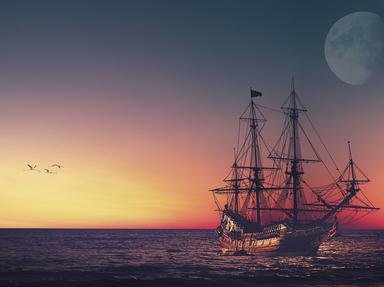Quiz Answer Key and Fun Facts
1. Egeria was a woman who, between the years AD 381 and AD 384, traveled to the Holy Lands from Spain. She traced her way via the Holy Bible and wrote about it in a letter that survives today. What Egyptian mountain did she write extensively about? It was, according to the Bible and Quran, where Moses received the Ten Commandments.
2. Gudrid Thorbjarnardottir explored the frontier of the New World around AD 1000, which was at least 350 years before Christopher Columbus. To what seafaring group of people did she belong?
3. Jeanne Baret was a botanist in her own right when she disguised herself as a man and snuck on board a ship with her lover. During her adventures, she discovered and named several plants including the bougainvillea. But what other amazing feat did she do starting in 1766?
4. This author of books such as "The Englishwoman in America" (1856) traveled extensively throughout her life, living along with the locals and natives in many areas. She broke new ground in Hawaii and Colorado and finished her life exploring Japan and the Middle East. Who is this progressive thinker, explorer, and writer?
5. Nellie Bly worked with frontiers of all different kinds and wrote about them in her career as a journalist. In 1887 she faked an illness and then did a series of articles about what she discovered. What kind of place did she "infiltrate"?
6. Gertrude Bell, an Oxford University graduate, explored the Middle East extensively in the early 1900s. She collaborated with T.E. Lawrence to negotiate treaties between Arab tribes.
True or False: Because of all her time spent in Baghdad, she was a key instrument in determining the boundaries of Syria.
7. Harriet Chalmers Adams, amongst other travels, spent three years in South America (1904-1907) and there saw "twenty frontiers never seen by a white woman". She kept a journal outlining these explorations. After returning to America, she spent over thirty years contributing to what magazine?
8. Louise Boyd's hero was Roald Amundsen. This helped chart her course to become an explorer in her own right and follow in his footsteps. What chilly oceanic area did she literally help "put on the map" in the 1930s?
9. Bessie Coleman was a woman of both African-American and Native-American descent. She faced formidable odds in the 1920s but persevered to break a frontier. In what field is she best known?
10. Valentina Tereshkova was the first woman in what many people call "the final frontier". In 1963, she entered what unchartered area?
Source: Author
stephgm67
This quiz was reviewed by FunTrivia editor
gtho4 before going online.
Any errors found in FunTrivia content are routinely corrected through our feedback system.
